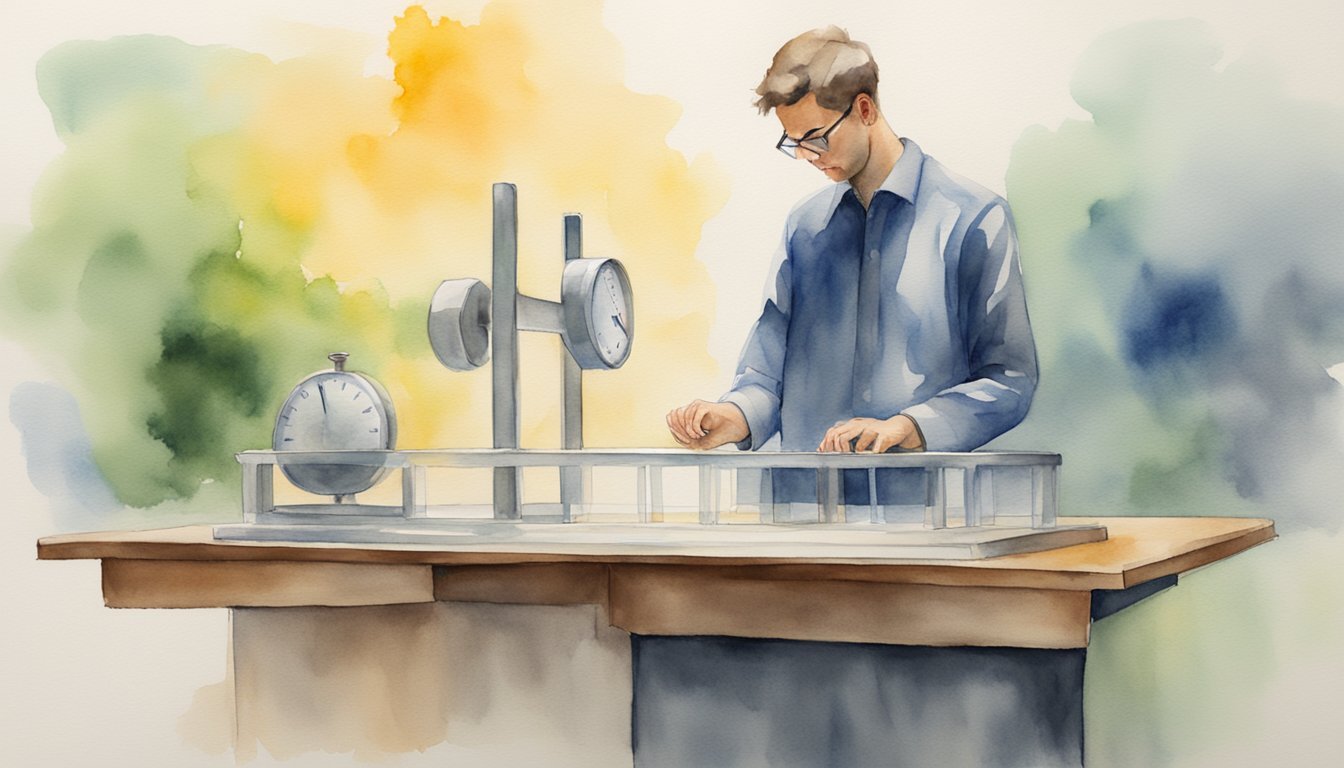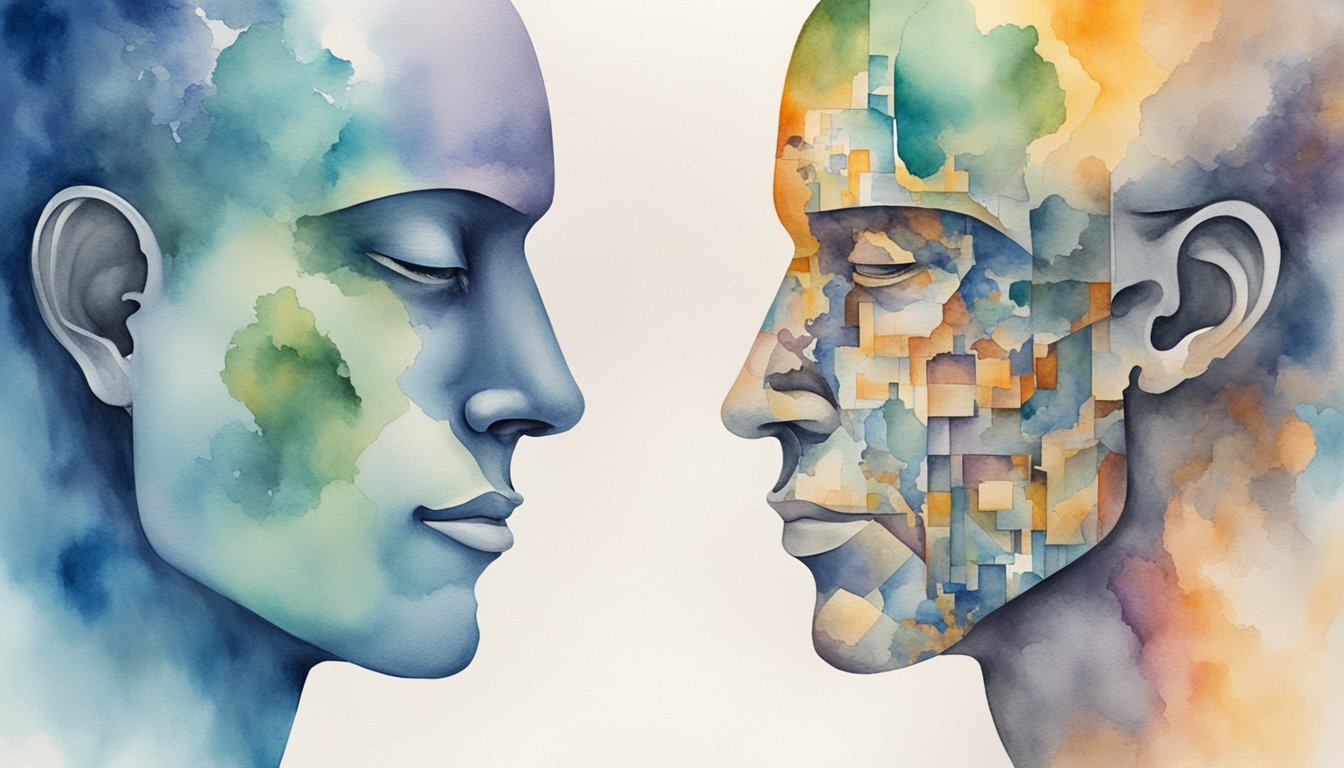Understanding System 1 and System 2
Diving into the human mind reveals a fascinating duality of thought, popularized by psychologist Daniel Kahneman. It introduces us to two distinct modes of thinking: the fast, intuitive, and emotional System 1, and the slower, more deliberate, and more logical System 2.
Defining the Dual Process Theory
The Dual Process Theory separates our cognitive processes into two basic systems. System 1, or the automatic system, operates effortlessly and quickly with little or no voluntary control. It’s the domain of snap judgements and intuitive reactions. Then there’s System 2, the effortful system, which requires deliberate attention and mental effort. It’s responsible for complex calculations and rational thinking. This dichotomy in our brains helps explain a variety of mental activities, from the simple act of recognizing a friend’s face to solving a challenging math problem.
Contrasting System 1 and System 2 Functions
One can’t mention System 1 and System 2 without acknowledging their intricate dance. System 1 is often guided by emotion and intuition, whereas System 2 is characterized by rational and analytic thought. For instance, when a person catches a ball, System 1’s automatic operations are at play. Conversely, crafting a well-thought-out argument employs System 2’s controlled processes.
While System 1 might decide on a gut feeling, System 2 checks the facts. It’s credited with actions involving voluntary control, like focusing on a voice in a noisy room. However, it’s also where bounded rationality, or the limits of our thinking capacity, become evident. Despite its abilities, System 2 can be lazy, often defaulting to the ease of System 1.
In understanding these two systems, one unravels the complexities of human cognition—how we make decisions, how we perceive our world, and how we react to it. It sheds light on the interplay between fast, automatic thought and slow, effortful analysis that defines so much of our behavior. To grasp more about this compelling topic, consider reading insights directly from Daniel Kahneman, whose work illuminates these contrasting cognitive functions.
Real-World Applications and Implications

In exploring how humans think and make choices, it’s essential to understand the practical impact of System 1 and System 2 thinking pathways on everyday life. These systems influence how individuals approach problems, fall prey to biases, and work to improve their decision-making processes.
Decision Making and Problem Solving
System 1 and System 2 play crucial roles in decision making and problem solving. System 1 operates quickly and automatically, relying on heuristics — mental shortcuts that simplify complex problems. This can be advantageous, allowing for instant judgments in straightforward situations. In contrast, System 2 involves slower, more deliberate thought, engaging logic and reasoning to carefully work through challenging problems. Blending both approaches, individuals can swiftly respond to simple issues while thoughtfully analyzing more intricate challenges.
Cognitive Biases and Errors
Despite their efficiency, heuristics can lead to systematic errors or cognitive biases. These biases often stem from System 1 thinking; for example, the confirmation bias leads people to favor information that confirms their existing beliefs. Understanding how these biases impact choices is crucial as they can skew risk assessment and influence decisions in finance, healthcare, and beyond.
Improving Thinking and Choices
Armed with awareness of these distinct thinking systems and their effects, individuals and organizations can work to improve thinking and choices. Techniques like mindfulness and critical thinking exercises engage System 2, reducing the influence of biases and errors on decisions. Cultivating a habit of reflection can enhance problem-solving skills and lead to better outcomes in both personal and professional realms. By consciously shifting to System 2 when facing complex problems, one can mitigate the automatic responses of System 1 that may not always be suitable.
Psychological and Behavioral Insights

It’s fascinating how the two distinct systems of our brain, System 1 and System 2, influence our behavior. They balance between quick, automatic reactions and thoughtful, deliberate decision-making.
The Influence of System 1 and System 2 on Behavior
System 1 operates unconsciously, rapidly processing information and relying on heuristics and past experiences to make decisions. It’s the automatic pilot, handling tasks like reading emotions and determining familiar voices. For example, recognizing that a sharp object is dangerous happens almost instantaneously, thanks to System 1.
In contrast, System 2 requires deliberate attention and effort. It’s what we engage when solving a math problem or determining the source of a faint sound. This system can override the impulses of System 1, though it’s slower and demands more energy.
Renowned psychologists Daniel Kahneman and Amos Tversky introduced these concepts, further explored in Kahneman’s book, Thinking, Fast and Slow. Their work shows how these two systems shape our judgments and decisions, often without us realizing it.
Cultural and Educational Factors
Culture shapes how we use System 1 and System 2. For instance, in individualistic societies, there might be more emphasis on critical thinking, an aspect of System 2. Meanwhile, collectivistic cultures can prioritize harmony and consensus, sometimes aligning closely with the intuitive responses of System 1.
Education also plays a crucial role. Learning to engage System 2, through practice and experience, can help overcome limitations, like biases and prejudices inherent in System 1 thinking. Keith Stanovich and Richard West, both cognitive scientists, emphasize the importance of rational thought and reflective mindsets, which are hallmarks of a well-honed System 2.
System 2’s demanding nature means it’s not always the default. Attention and memory are critical, as they enable us to switch to System 2 when needed. For instance, catching mistakes or learning a new skill requires a level of conscious attention that System 1 simply does not provide.
In the end, both systems are indispensable. They jointly navigate the maze of daily decisions, from simple tasks to complex problem-solving. Understanding their dynamics can lead to improved learning techniques and strategies for managing attention—a dual effort making the most of both instinctive and analytical aspects of the human mind.

